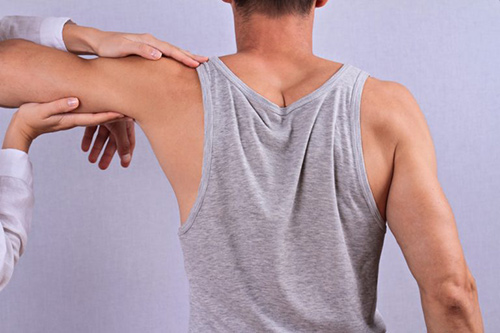
This type of injury tends to occur when an individual falls directly onto his/her shoulder. However, a “separated shoulder” – regardless of the name – isn’t a true injury of the shoulder joint itself. Instead, it’s an injury that involves the acromioclavicular joint (also known as the “AC joint”), which is where the clavicle (collarbone) meets the acromion, which is the highest point of the shoulder blade, damaging the ligaments that surround and stabilize the AC joint. This type of injury gets its name because, if the injuring force is severe enough, the ligaments that attach to the underside of the clavicle are torn and the area in question “separates” and a “bump” or “bulge” forms above the joint.
Just as with virtually any other type of injury, a separated shoulder can cause mild pain in some, and excruciating pain in others. Typically, the greater the deformity, the more intense the pain (and the longer it takes for pain-free function to return). When a deformity is visible, identifying and diagnosing the condition is relatively easy. For instance, with the most severe type of shoulder separation, all the ligaments surrounding the joint are torn, causing noticeable displacement. Less serious versions can range from partial tears that cause more subtle misalignment of the collarbone to a mild sprain of the AC ligament that doesn’t displace the collarbone at all and may look normal on X-rays.
There are both surgical and non-surgical means of treating this type of injury and, unless it’s severe, it’s possible that nonsurgical intervention can treat the injury successfully. Nonsurgical treatments involve the use of cold packs, slings, and medications to help manage pain. If needed, some supports are more useful than a simple sling that your doctor may use to provide more support and to help lessen both pain and motion of the AC joint.
If surgery is required, it’s often to reconstruct the ligaments that attach to the underside of the collarbone and/or to “trim” back the end of the collarbone to lessen any friction between it and others structures within the joint.
Regardless of whether surgery is required or not, rehabilitation is necessary to restore and rebuild strength, motion, and flexibility.

